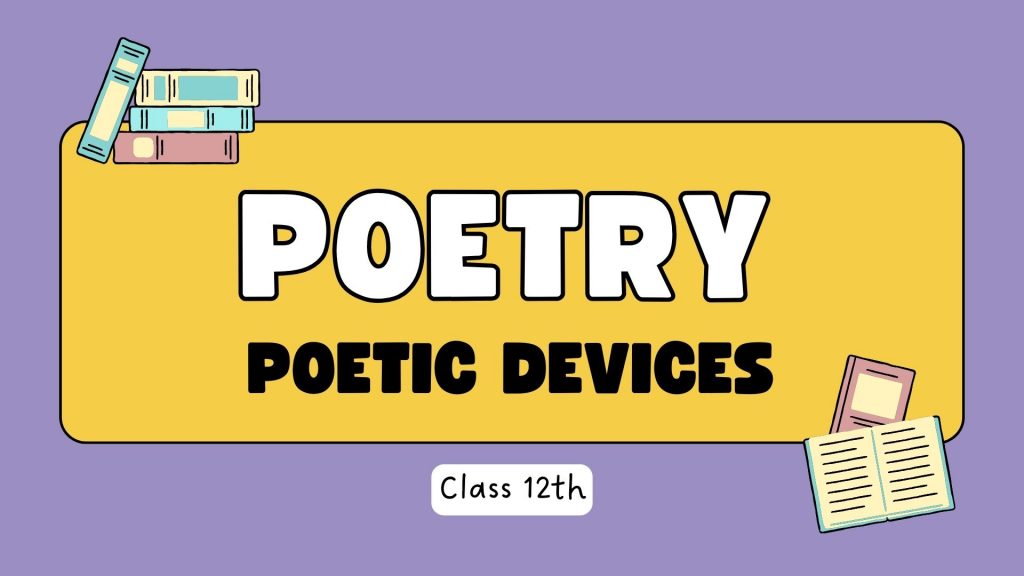Welcome to the enchanting world of poetic devices! In Class 12, students embark on a journey where words transcend their literal meanings and dance gracefully on the canvas of language. This comprehensive guide, “Where Words Dance: Exploring Poetic Devices Class 12,” is your passport to unlocking the secrets of poetic expression. Whether you’re a student, educator, or poetry enthusiast, join us as we delve deep into the intricacies of language, rhyme, and rhythm.

1: Understanding Poetic Devices In this chapter, we lay the foundation by exploring the fundamentals of poetic devices. From similes and metaphors to imagery and symbolism, each device adds depth and richness to poetry. We’ll discuss how poets use these tools to evoke emotions, paint vivid pictures, and convey complex ideas.
2: The Power of Sound: Rhyme and Rhythm Rhyme and rhythm are the heartbeat of poetry. In this chapter, we’ll dissect the mechanics of rhyme schemes and meter, unraveling the mysteries behind their mesmerizing cadence. Through examples and exercises, you’ll learn how to craft verses that resonate with musicality and flow.
3: Painting with Words: Imagery and SymbolismImagery and symbolism transform ordinary words into works of art. Here, we’ll explore how poets create vivid mental images and imbue their writing with deeper meanings. Dive into the world of sensory language, where every word is a brushstroke on the canvas of imagination.
4: Playing with Language: Alliteration and Assonance Alliteration and assonance add a playful charm to poetry, captivating readers with their rhythmic repetition of sounds. This chapter delves into the nuances of these devices, showcasing their ability to create harmony and resonance within verses.
5: Beyond the Literal: Figurative Language Figurative language invites readers to see the world through a different lens, transcending the boundaries of literal interpretation. From personification to hyperbole, we’ll explore how poets use figurative devices to infuse their writing with depth, humor, and insight.
6: Crafting Meaning: Symbolism and Allegory Symbolism and allegory are powerful tools for conveying complex themes and concepts in poetry. Here, we’ll examine how poets employ these devices to imbue their work with layers of meaning, inviting readers to embark on a journey of interpretation and discovery.
7: The Art of Poetic Form: Sonnets, Villanelles, and More Poetic form adds structure and discipline to the creative process, shaping the way words flow on the page. From sonnets to villanelles, this chapter explores various forms of poetry, highlighting their unique features and challenges.
8: Finding Your Voice: Writing and Analyzing Poetry In the final chapter, we’ll put theory into practice as we explore the process of writing and analyzing poetry. Through writing prompts, workshops, and literary analysis, you’ll hone your skills as both a creator and a critic of poetry.
Conclusion:
Congratulations! You’ve completed your journey through “Where Words Dance: Exploring Poetic Devices in Class 12.” Armed with a deeper understanding of poetic expression, may you continue to explore the boundless possibilities of language and creativity. Whether you’re penning your own verses or analyzing the works of renowned poets, may your words always dance with grace and meaning.





GIPHY App Key not set. Please check settings